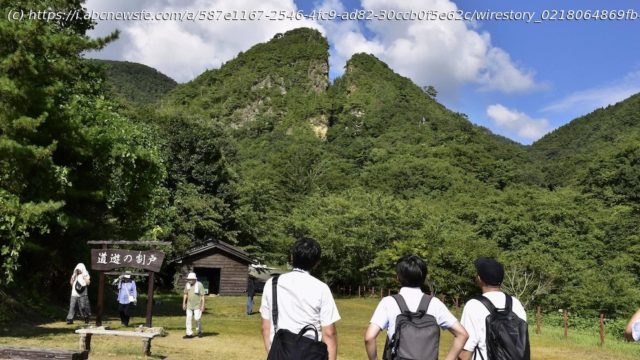Japan is holding a memorial ceremony near the Sado Island Gold Mines, which were listed this summer as a UNESCO World Heritage site after the country resolved years of disputes with South Korea and reluctantly acknowledged the dark side of their history
Japan is holding a memorial ceremony on Sunday near the Sado Island Gold Mines, which were listed this summer as a UNESCO World Heritage site after the country settled years of historical disputes with South Korea and reluctantly acknowledged the mines‘ dark history.
At these mines, hundreds of Koreans were forced to labor under abusive and brutal conditions during World War II, historians say. The Japanese government says Sunday’s ceremony will pay tribute to “all workers” who died at the mines, but without spelling out who they are — part of what critics call a persistent policy of whitewashing Japan’s history of sexual and labor exploitation before and during the war.
Ahead of the ceremony Sunday, The Associated Press explains the Sado mines, their history and the controversy.
The 16th century mines on the island of Sado, about the size of the Pacific island of Guam, off the western coast of Niigata prefecture, operated for nearly 400 years beginning in 1601 and were once the world’s largest gold producer. They closed in 1989. During the Edo period, from 1600 to 1868, the mines supplied gold currency to the ruling Tokugawa Shogunate.
Today, the site has been developed as a tourist facility and hiking site where visitors can learn about the changes in mining technology and production methods while looking at the remains of mine shafts and ore dressing facilities.
Critics say the Japanese government only highlights the glory of the mines and covers up its use of Korean victims of forced labor and their ordeals. The mines were registered as a cultural heritage site in July after Japan agreed to include an exhibit on the conditions of Korean forced laborers and to hold a memorial service after repeated protests from the South Korean government.
At the July meeting of the UNESCO World Heritage Committee, the Japanese delegate said Tokyo had installed new exhibition material to explain the “severe conditions of (the Korean laborers’) work and to remember their hardship.”
Japan also acknowledged that Koreans were made to do more dangerous tasks in the mine shaft, which caused some to die. Those who survived also developed lung diseases and other health problems. Many of them were given meager food rations and nearly no days off and were caught by police if they escaped, historians say.
Start
United States
USA — mix Japan will hold first memorial for 'all workers' at Sado gold mines...






